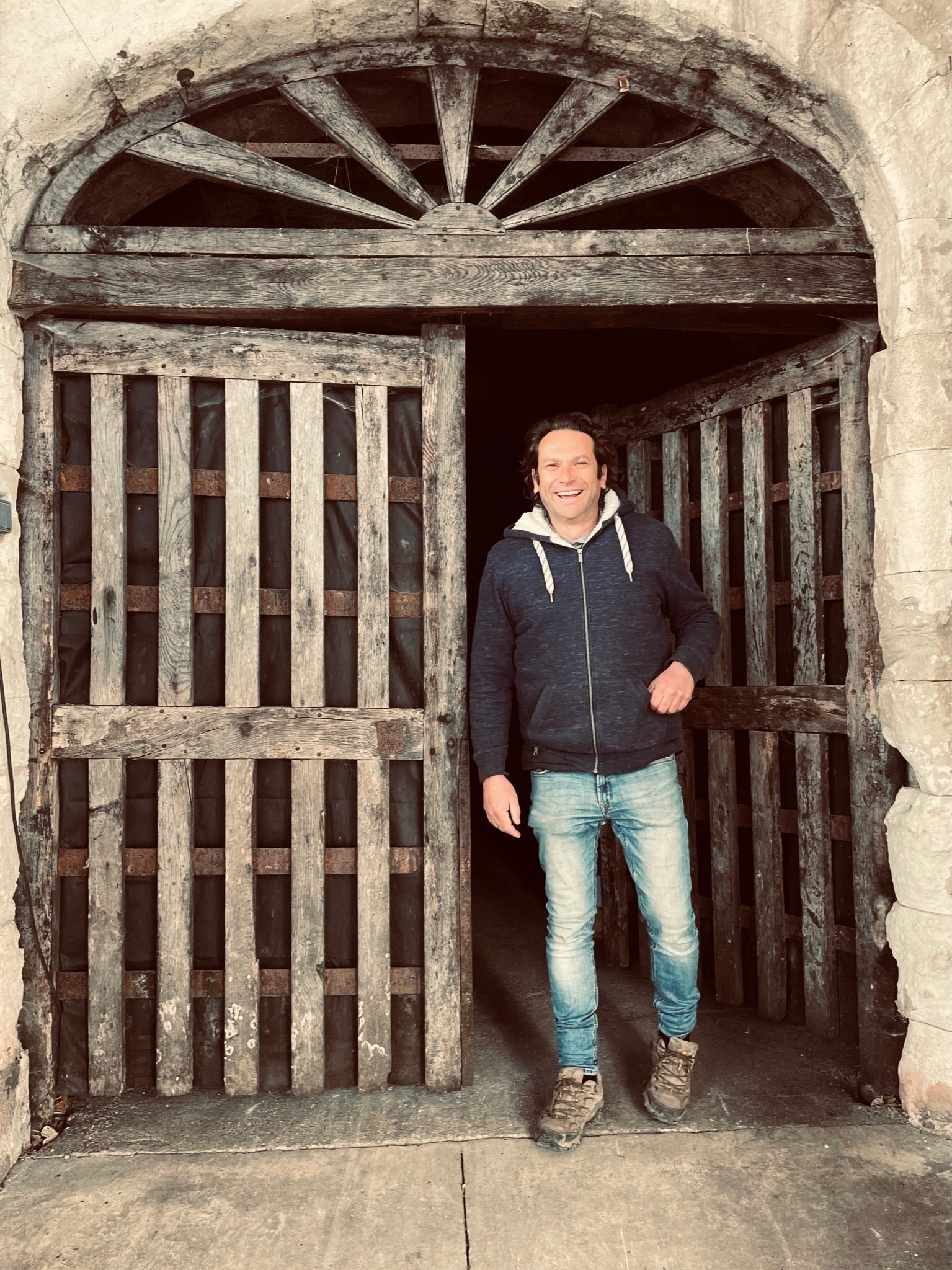Chez Mikaël Bouges

Ahead of some exciting new arrivals landing next week, we thought we’d look back at our visit to Faverolles-sur-Cher a couple of weeks ago, where we were finally able to catch up with Mikaël Bouges at home again for the first time since 2019.
After a long day and night at the Caves de la Vallée du Cher fair the previous day, Mikaël greets us at his cellars with a knowing smile and a twinkle in his eye. What else to straighten oneself out other than a quick glass of lean, saline pet-nat? Clic Clic 2022 made with 100% Menu Pineau is tasting on point - and we’re ready.
First out to the vines, a short drive in the car and conveniently located in the close proximity of the cellar. Mikaël bought some of the 8 hectare domaine from his father in the mid-00s, who by this point had already obtained organic certification. Since then he has acquired an additional 4 hectares from which he sells the grapes on to Noëlla Morantin and Pascal & Moses of Les Capriades. The parcels of Sauvignon and Chenin Blanc, Gamay, Menu Pineau & Côt are all largely adjacent to one another at varying aspects over a long low-browed hill that slopes down to the river Cher. As such, the soils are an alluvial mix of limestone gravel, clay, quartz-rich sands and silex, brought together by the historical river flow and fundamentally linked to the pristine character of Mikaël’s stony, mineral wines. Interestingly, the low pH of these soils naturally blocks malolactic from completing in the fermentation of the whites; another contributing factor to their inherent edge.
It’s late March and the vines are just beginning to bud, with the looming threat of frost in the morning air. It’s always a time of stress for winegrowers, but Mikaël seems to give off an air of calm self-possession. He trains his vines as guyot with just a single spur, effectively halving the yield of the vineyard surface but improving grape concentration. The spurs at this point are incredibly long, twirling around into the rows between the vines. It’s actually a neat frost-dodging technique - the first buds to appear at their ends can be pruned away later when the cooler months have passed, to allow new buds closer to the vine to bloom in relative safety. Nevertheless, like many he has still suffered significant losses in recent years, but he remains philosophical. Looking up, he flashes another smile and shrugs, acknowledging that all is nature’s whim in the end.
Back at the cellar we marvel at Mikaël’s organised, methodical setup. We stand beneath an open chai that sits in front of a wall of limestone into which the caves are carved. He wheels his steel and fibreglass tanks out into this airy space to allow native yeast fermentations to commence al fresco at ambient temperature, before taking them inside again when it cools down in October, where the activity can often go into hibernation until the spring. The cellars are Troglodytic and date back to the 16th century; as we step into the cool, damp darkness we are greeted with rows of dusty old demi-muid barrels and riddling racks slotted with hundreds of luminous bottles of sparkling white and rosé wine silently awaiting disgorgement. Everything is quiet and still, but equally there is the sense that something is taking place inside of all of these vessels. In the deeper recesses the stone partitions are densely stacked with resting bottles. Mikaël is in the strong position of being able to give the finished wines the time they need before release. What every vigneron needs is a limestone cave, we decide. Moving with the flow of the seasons and the naturally favourable conditions they provide at all stages of vinification, from pressing to bottling, it’s a beautiful thing to behold. Modern technology is not required to make the kind of wine we love.
Clic Clac, La Bulle and French Clara 2022, Prométhée 2021 and Les Côts Hauts 2020 will be with us very soon, details to follow next week! In the meantime, the current Bouges wines we have available are in the shop and available to order from the online cellar.